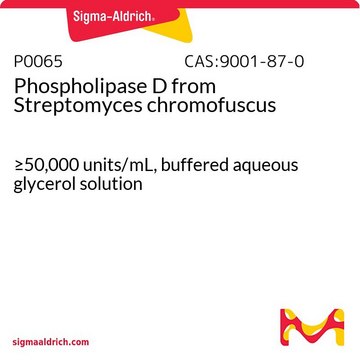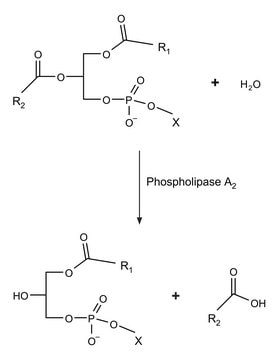MAK137
Phospholipase D Activity Assay Kit
sufficient for 100 colorimetric or fluorometric tests
Sinónimos:
PLD Activity Assay Kit
About This Item
Productos recomendados
uso
sufficient for 100 colorimetric or fluorometric tests
método de detección
colorimetric
fluorometric
enfermedades relevantes
cancer
temp. de almacenamiento
−20°C
Información sobre el gen
human ... PLD1(5337) , PLD2(5338) , PLD3(23646) , PLD4(122618) , PLD5(200150) , PLD6(201164)
mouse ... PLD1(18805) , PLD2(18806) , PLD3(18807) , PLD4(104759) , PLD5(319455) , PLD6(194908)
rat ... PLD1(25096) , PLD2(25097) , PLD3(361527) , PLD4(362792) , PLD5(289270) , PLD6(287366)
Categorías relacionadas
Descripción general
Aplicación
Características y beneficios
Idoneidad
Principio
Palabra de señalización
Danger
Frases de peligro
Consejos de prudencia
Clasificaciones de peligro
Aquatic Chronic 3 - Resp. Sens. 1
Código de clase de almacenamiento
10 - Combustible liquids
Punto de inflamabilidad (°F)
188.6 °F - closed cup
Punto de inflamabilidad (°C)
87 °C - closed cup
Elija entre una de las versiones más recientes:
Certificados de análisis (COA)
¿No ve la versión correcta?
Si necesita una versión concreta, puede buscar un certificado específico por el número de lote.
¿Ya tiene este producto?
Encuentre la documentación para los productos que ha comprado recientemente en la Biblioteca de documentos.
Los clientes también vieron
Nuestro equipo de científicos tiene experiencia en todas las áreas de investigación: Ciencias de la vida, Ciencia de los materiales, Síntesis química, Cromatografía, Analítica y muchas otras.
Póngase en contacto con el Servicio técnico











